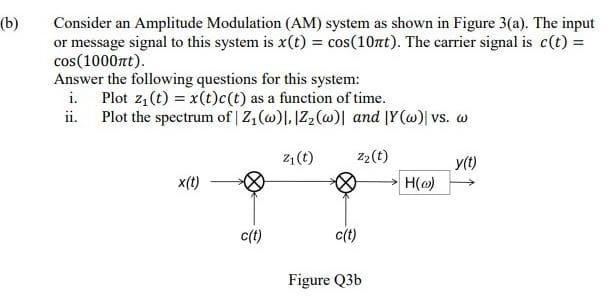(b) Consider an Amplitude Modulation (AM) system as shown in Figure 3(a). The input or message signal to this system is x(t) = cos(10πt). The carrier signal is c(t) = cos(1000πt). Answer the following questions for this system: i. Plot z1(t) = x(t)c(t) as a function of time. ii. Plot the spectrum of |Z1(ω)|, |Z2(ω)| and |Y(ω)| vs. ω Figure Q3b
